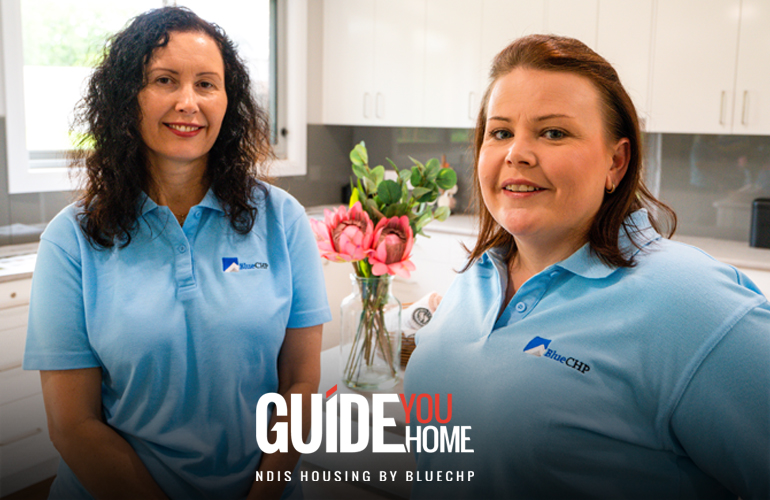
BlueCHP is proud to launch its new initiative, Guide You Home, which will develop Specialist Disability Accommodation.
BlueCHP is a not-for-profit Tier 1 Community Housing Provider and Australia’s largest SDA provider, having recently completed the Hunter Residences Program for the NSW Government. This project saw almost 350 people move from the large residential institutions in the Hunter Valley, into newly built homes in the community.
The Hunter Residences program has taught BlueCHP many things, not least that the SDA is complicated and that people entering this system need help to navigate its options. To help, BlueCHP has created Guide You Home, an initiative that will customise homes for each SDA participant. We recognise that a home is more than the sum of its parts. Above all, it’s about building a home you love.
Over the next 5 years BlueCHP, through its new initiative Guide You Home plans to build 1600 homes for people with disabilities. Our aim is to remove complexity and to deliver truly customised homes;
- We are raising funds from investors, so parents don’t have to finance their SDA home.
- We manage finances, planning, architecture and consultants. This is our bread and butter so you can leave it all to us.
- We’ll also work with your OT, SIL and support network to make sure each element of the design is well considered.
- We get the home built to the timeline we discussed.
- We are also building a portfolio of housing, so if you choose to move, we can offer a place in different locations.
- We will also look after all maintenance and defects.
When it comes to customisation, it’s worth talking about details.
Homes designed for Improved Liveability help provide a reasonable level of physical access for people living with sensory, intellectual or cognitive needs. Improved Livability homes are designed to help residents live safely and independently.
People with intellectual and cognitive needs might benefit from the use of contextual cues, improved lines of sight and consistency in the location of fittings and fixtures. Features like luminance contrasts or hearing augmentation can also be used to assist residents.
High Physical Support homes are designed to support residents with significant physical needs who require a high level of support. These homes have the features of the Fully Accessible home along with extra structural provisions for things like ceiling hoists and 950mm clear opening width doors to habitable rooms.
Assistive technology can play an important role in this kind of home with emergency power solutions being especially critical where the welfare of residents is at risk.
A high level of physical access is the priority for a Fully Accessible home which is designed for residents living with physical disabilities. Wheelchair accessibility plays a vital role and amenities are designed to make using them as straightforward as possible. For example, bathroom vanities, kitchen sinks and benches, cooktops, dishwashers, ovens, washing machines and dryers can all be used in either a standing or seated position. Assistive technology and some automated functions can be helpful here also.
Fully Accessible homes support the needs of residents and empower people to function safely and easily in their own home.
Resilient and sturdy, the Robust home is built to accommodate and support people with complex needs.
A priority of a Robust home is to keep residents and carers safe. High impact wall linings, secure windows with laminated glass, sound proofing and spaces for residents or carers to retreat, are all features that can be included to help create a safe, accessible and manageable home. Durable but inconspicuous materials are used so the home fits in with the surrounding neighbourhood and is strong enough not to require constant maintenance.
Since 2008 we have delivered more than 1700 affordable homes, retaining about 800 for people on low or moderate incomes. If you want to ask about the customisation that can be made to a home or to talk about getting access to a customised home please get in touch.
